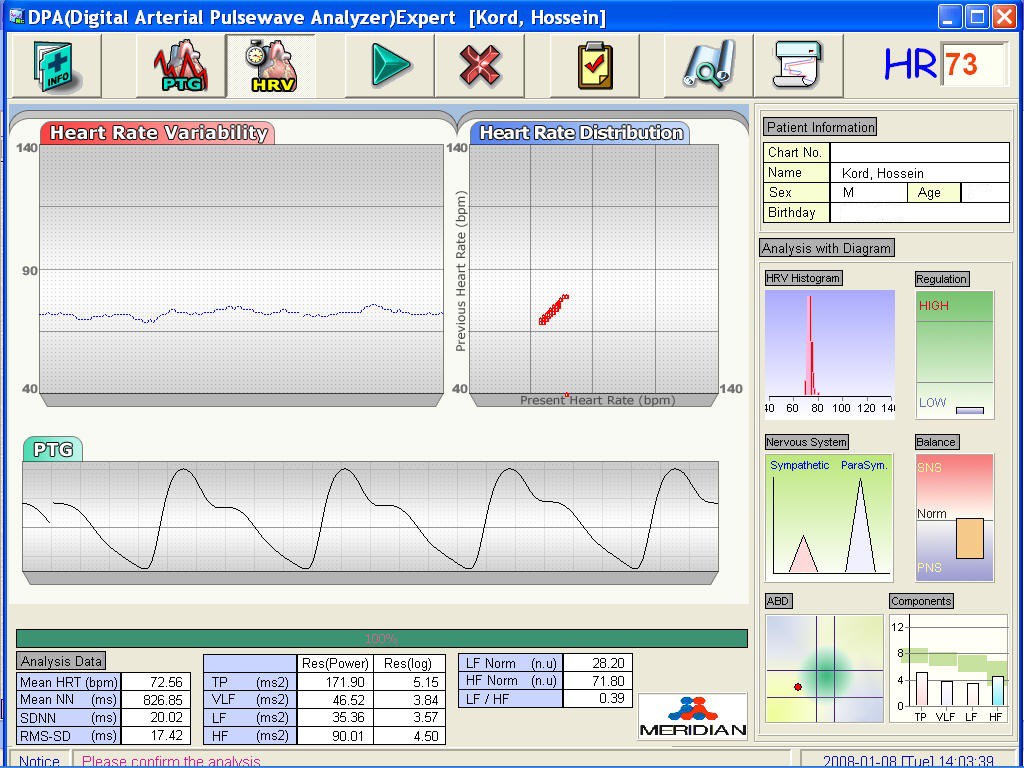Comprehensive Cardiovascular Evaluation: $50
Cardiovascular related conditions are the #1 killer in this country. It is also known as silent killer because majority of people have no symptoms until it is too late. Any one, young or old, healthy or sick, physically fit or unfit, can have hidden cardiovascular imbalances. Early detection is the key.By using a noninvasive method and in less than 10 minutes many information will be obtained about how well your cardiovascular system is functioning.
The following heart and circulation markers will be evaluated during this process. Many of these markers are similar to an ECG (electrocardiogram) used by cardiologists. These markers will give an accurate picture of the state of heart and circulation.
- Pulse Rate: Resting heart rate in beats / minutes.
- Pulse Recognition: Shows what percentage of pulses were recognized. Low recognition could point to serious heart issues. Similar to electrocardiogram.
- Ejection Time (ETc): The time it takes for the left ventricle to contract. Similar to echocardiogram.
- Pulse Height / Pulse Amplitude (PH): The amount of pressure / volume with each heart beat. Similar to stroke volume.
- Plethysmograph Waveform (PTG): The shape of this waveform is a good indication of arterial elasticity.
- Dicrotic Wave Detection: Existence of Dicrotic notch on plethysmograph waveform is a good indication of arterial elasticity.
- Accelerated Plethysmograph (APG): A good way of measuring the biological age of arteries.
- Ejection Elastic Index (EEI): An indicator for left ventricle ejection and elasticity of large arteries
- Dicrotic Dilation Index (DDI): An indicator for small artery compliance
- Dicrotic Elastic Index (DEI): Peripheral vessel elasticity (arterioles to veins)

